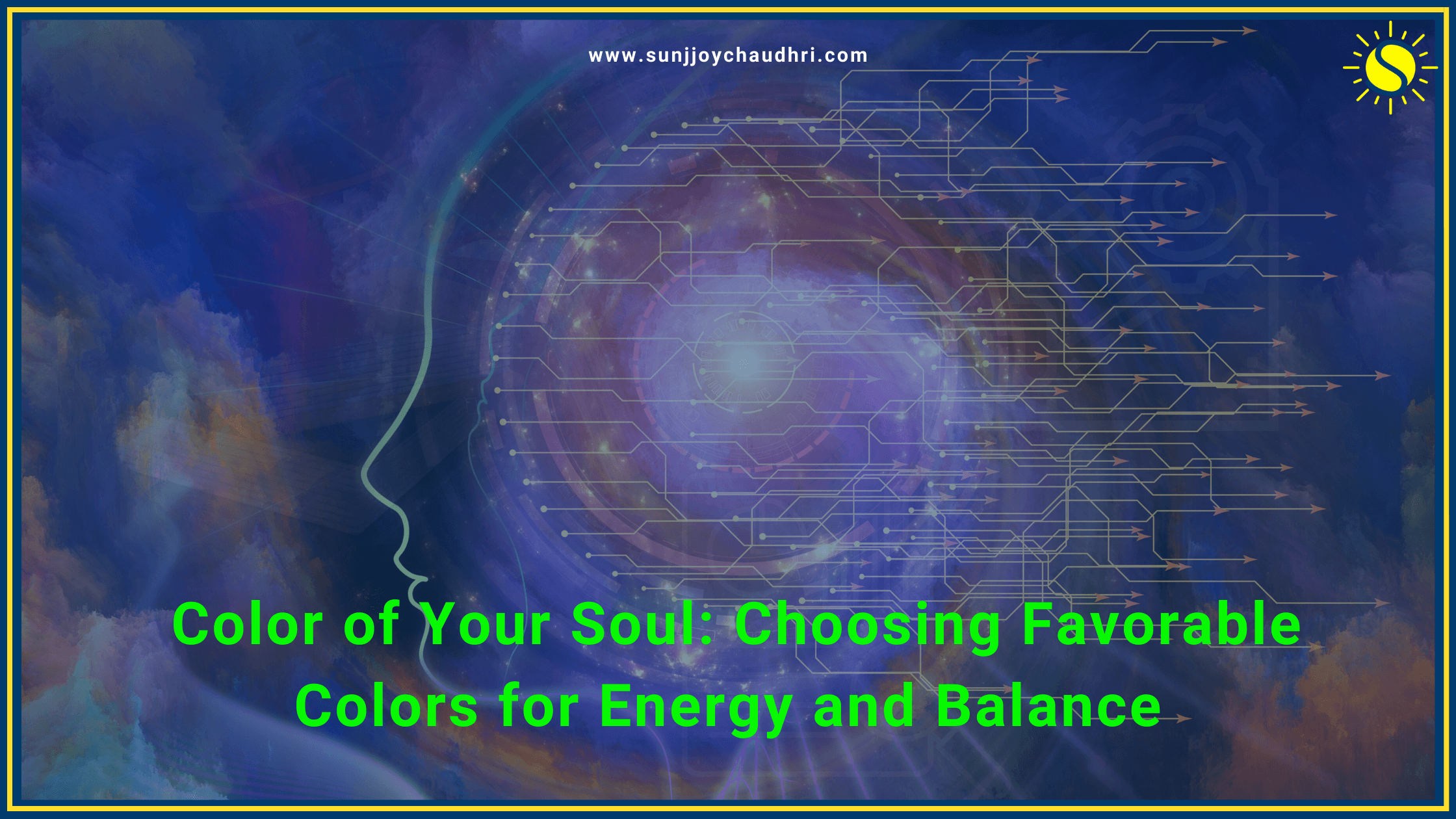Understanding the Connection Between Colors and Energy
Have you ever wondered why certain colors make you feel happy, calm, or even anxious? The field of color psychology explores how different hues influence our mental, emotional, and physical states. From color therapy to spiritual psychology, colors play an essential role in shaping our daily experiences. This article about colors will guide you in selecting the right shades to maintain balance and enhance well-being.
Colors are more than just visual stimuli; they have profound psychological effects on human emotions and behaviors. Warm colors like red, orange, and yellow are often associated with energy, passion, and excitement, while cool colors such as blue, green, and purple tend to evoke feelings of calmness, relaxation, and serenity. In color therapy, specific hues are used to promote healing and emotional balance. For instance, blue is believed to reduce stress and encourage tranquility, while yellow can stimulate positivity and mental clarity.
In spiritual psychology, colors are linked to chakras, each representing different aspects of well-being.Favorable colors can influence your mood and mindset. The right choice of colors in surroundings, clothing, and décor can influence mood and productivity. Whether in art, marketing, or personal spaces, understanding color psychology can help create harmonious environments that enhance overall well-being and emotional stability.
The Science of Color Psychology and Spiritual Healing
In spiritual psychology, colors represent different vibrations that interact with our energy fields. Each color carries a specific frequency that can affect our mood, thoughts, and overall well-being. The study of color psychology emotions suggests that colors can evoke specific feelings and colors influence our actions. By understanding color psychology personality, we Wearing favorable colors brings harmony to your aura.can use spiritual healing colors to align with our needs. Whether you want to uplift your spirit, calm your mind, or heal your body, choosing the right color of healing energy is crucial.
Color psychology emotions play a powerful role in shaping our experiences, as different colors stimulate various psychological and physiological responses. For instance, warm colors like red, orange, and yellow can evoke feelings of energy, passion, and motivation, while cool colors like blue, green, and purple tend to promote relaxation, harmony, and introspection. The study of color psychology personality suggests that individuals are naturally drawn to colors that reflect their inner state and personal energy.
Spiritual healing colors are used in various practices, Choose favorable colors that align with your birth number.such as meditation, chakra balancing, and aura cleansing, to restore equilibrium in the mind, body, and soul. Each color of healing energy resonates with specific chakras or aspects of our consciousness, influencing emotional and spiritual growth. By consciously integrating these colors into our surroundings, clothing, or visualization exercises, we can harness their healing properties to enhance well-being. Understanding the profound impact of colors helps us make intentional choices that align with our spiritual and psychological needs.
Exploring Color Therapy: The Power of Healing Hues
Color therapy is a holistic healing method that uses different shades to balance the mind, body, and spirit. This ancient practice is rooted in the idea that colors emit specific vibrations that influence emotions, thoughts, and overall well-being. By understanding the effects of various hues, individuals can harness their energy for healing, emotional regulation, and spiritual growth.Your home decor should reflect favorable colors for peace.Business success can be boosted by favorable colors.
- Red: Boosts energy and passion, perfect for motivation. This fiery shade stimulates physical vitality, enhances confidence, and encourages action. It is often associated with courage and determination, making it ideal for overcoming lethargy and self-doubt.
- Orange: Encourages creativity and enthusiasm. This warm and vibrant hue enhances social interactions, uplifts the mood, and inspires innovation. It is linked to joy and excitement, helping individuals break free from mental blocks.
- Yellow: Enhances happiness and clarity. This bright and uplifting color stimulates intellect, increases focus, and promotes a positive mindset. It can dispel negative thoughts and bring a sense of optimism.
- Green: Symbolizes renewal and harmony, a strong color of healing energy. As the color of nature, green provides balance, calms emotions, and supports physical and emotional healing.
- Blue: Promotes peace, stability, and spiritual growth. This soothing shade lowers stress, fosters relaxation, and encourages clear communication, making it ideal for meditation and introspection.
- Purple: Represents wisdom, spirituality, and transformation. It connects with higher consciousness, encourages deep reflection, and fosters creativity, making it a powerful color for those on a spiritual journey.
- White: A purifying color that connects with higher consciousness. White embodies purity, new beginnings, and mental clarity, creating a sense of peace and divine connection.
By incorporating these shades into your environment, clothing, or meditation practices, you can tap into their powerful vibrations, fostering emotional balance and overall well-being.
Favorable colors enhance your personal energy field.
Numerology reveals your most favorable colors.
Colors and Emotions: How to Choose the Right Shades for Balance
The relationship between colors and emotions is profound. When you recognize how feelings and colors interact, you can intentionally choose colors that support your well-being. If you’re seeking relaxation, opt for soothing blues and greens. These colors are often associated with nature, tranquility, and serenity, making them ideal for reducing stress and promoting inner peace. On the other hand, if you need energy
, incorporate vibrant reds and oranges into your surroundings. These shades stimulate enthusiasm, motivation, and passion, helping to boost productivity and confidence.Each zodiac sign has its own favorable colors.Use favorable colors to attract positivity and growth.
A well-structured color psychology guide helps determine which spiritual healing colors are best for your emotional needs. Understanding how different hues impact the mind and spirit allows for conscious choices in décor, clothing, and even daily activities. Many believe that using color therapy in daily life can bring harmony and stability. Color therapy, also known as chromotherapy, is based on the principle that different colors emit vibrations that influence human emotions and energy levels. For example, yellow is linked to happiness and clarity, while purple is connected to wisdom and spirituality. By mindfully integrating these colors into your life, you can create a balanced environment that enhances emotional well-being and overall harmony.
Color Psychology and Personality: Discovering Your Soul’s True Hue
Your favorite colors reveal a lot about your personality. Color psychology personality studies indicate that individuals drawn to specific colors often share common traits. Understanding this can help you use colors to your advantage. Whether you seek personal growth, emotional stability, or deeper spiritual awareness, embracing the right colors can be a Favorable colors support emotional and spiritual balance. transformative experience.
Colors have a profound impact on our emotions, behaviors, and even decision-making processes. Different colors evoke different psychological responses. For instance, people who prefer blue often exhibit traits of calmness, reliability, and trustworthiness, while those drawn to red tend to be passionate, energetic, and bold. Similarly, individuals who favor yellow are often associated with optimism, creativity, and enthusiasm, whereas lovers of green may prioritize balance, harmony, and a connection to nature.
Understanding color psychology personality traits can help you harness the power of colors in various aspects of life, from personal branding to interior design. Wearing certain colors can boost confidence, create a sense of tranquility, or enhance focus.
Businesses also use color strategically in marketing to influence consumer behavior. Moreover, colors can be used in therapy to promote healing and emotional well-being. By consciously incorporating colors that align with your goals and emotions, you can create an environment that nurtures positivity, growth transformation.
The Role of Color Psychology in Daily Life
By applying the principles of color psychology, we can create spaces, fashion choices, and wellness routines that align with our energy needs. A well-balanced color palette enhances not only aesthetics but also emotional and spiritual harmony. Whether you’re selecting home decor, choosing an outfit, or engaging in color therapy, understanding colors and feelings is the key to a more fulfilling life.Wearing your favorable color increases confidence.
Color psychology plays a vital role in shaping our moods, behaviors, and overall well-being. Each color carries a unique frequency and psychological effect that can either uplift, calm, energize, or ground us.
For instance, warm colors like red, orange, and yellow evoke passion, enthusiasm, and warmth, making them ideal for stimulating spaces like living rooms and creative studios. On the other hand, cool colors such as blue, green, and purple promote relaxation, stability, and introspection, making them suitable for bedrooms, meditation areas, and self-care routines.Meditation is deeper with the right favorable colors.
Fashion choices also benefit from color psychology, as wearing different shades can influence our confidence and interactions. Bright colors exude positivity and energy, while neutrals provide balance and sophistication. In wellness routines, incorporating colors through chromotherapy, visualization, or even food selection can enhance emotional well-being. By mindfully integrating color into our lives, we can create an environment that nurtures positivity, supports mental clarity, and aligns with our personal growth. Recognizing how colors affect our emotions enables us to design spaces and lifestyles that resonate with our inner energy, leading to a more harmonious and vibrant life.
Conclusion: Embracing the Colors of Your Soul
The study of spiritual psychology and color psychology provides valuable insights into the impact of colors on our well-being. By recognizing the connection between colors and emotions, you can harness the power of spiritual healing colors to bring balance and energy into your life. Setup Mastery understands the significance of colors in both personal and professional spaces, helping individuals and businesses make informed decisions that align with their goals and well-being
. Colors influence not just the way we perceive the world but also our emotional and spiritual state, affecting our mood, thoughts, and overall well-being. Each color carries a unique vibration that interacts with our energy field, promoting healing, harmony, or stimulation depending on its frequency.Chakra healing works best with favorable colors.
This article about colors serves as a color psychology guide to help you make conscious choices in your daily life. Setup Mastery provides expert guidance on integrating color psychology into business environments, branding, and personal development strategies. Whether it’s the calming effect of blue, the rejuvenating energy of green, or the passionate intensity of red, understanding the spiritual and emotional significance of
colors allows you to align them with your intentions. Surrounding yourself with the right color of healing energy can improve your mental clarity, boost positivity, and help you achieve a sense of inner peace.Surround yourself with favorable colors to reduce stress.Favorable colors bring alignment to your inner self.The right colors help manifest your goals faster.
Remember, the color of healing energy you surround yourself with influences your thoughts, actions, and overall happiness. Setup Mastery encourages you to incorporate the right colors in your environment, clothing, or meditation practices to create a more balanced and vibrant life. Choose wisely, and let the colors of your soul shine!



